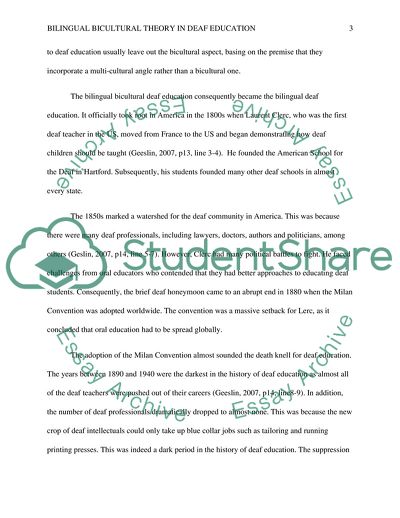Cite this document
(Bilingual Bicultural Theory in Deaf Education Literature review Example | Topics and Well Written Essays - 2250 words, n.d.)
Bilingual Bicultural Theory in Deaf Education Literature review Example | Topics and Well Written Essays - 2250 words. https://studentshare.org/education/1817661-bilingual-bicultural-theory-in-deaf-education
Bilingual Bicultural Theory in Deaf Education Literature review Example | Topics and Well Written Essays - 2250 words. https://studentshare.org/education/1817661-bilingual-bicultural-theory-in-deaf-education
(Bilingual Bicultural Theory in Deaf Education Literature Review Example | Topics and Well Written Essays - 2250 Words)
Bilingual Bicultural Theory in Deaf Education Literature Review Example | Topics and Well Written Essays - 2250 Words. https://studentshare.org/education/1817661-bilingual-bicultural-theory-in-deaf-education.
Bilingual Bicultural Theory in Deaf Education Literature Review Example | Topics and Well Written Essays - 2250 Words. https://studentshare.org/education/1817661-bilingual-bicultural-theory-in-deaf-education.
“Bilingual Bicultural Theory in Deaf Education Literature Review Example | Topics and Well Written Essays - 2250 Words”. https://studentshare.org/education/1817661-bilingual-bicultural-theory-in-deaf-education.


